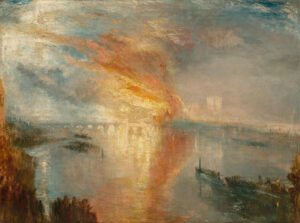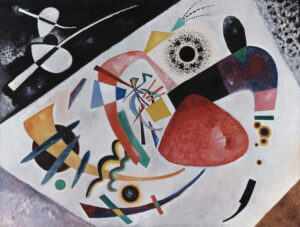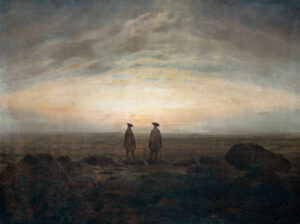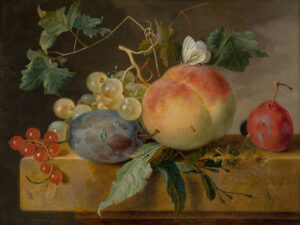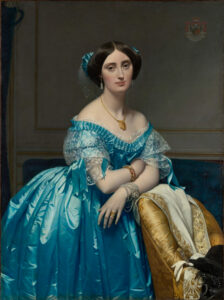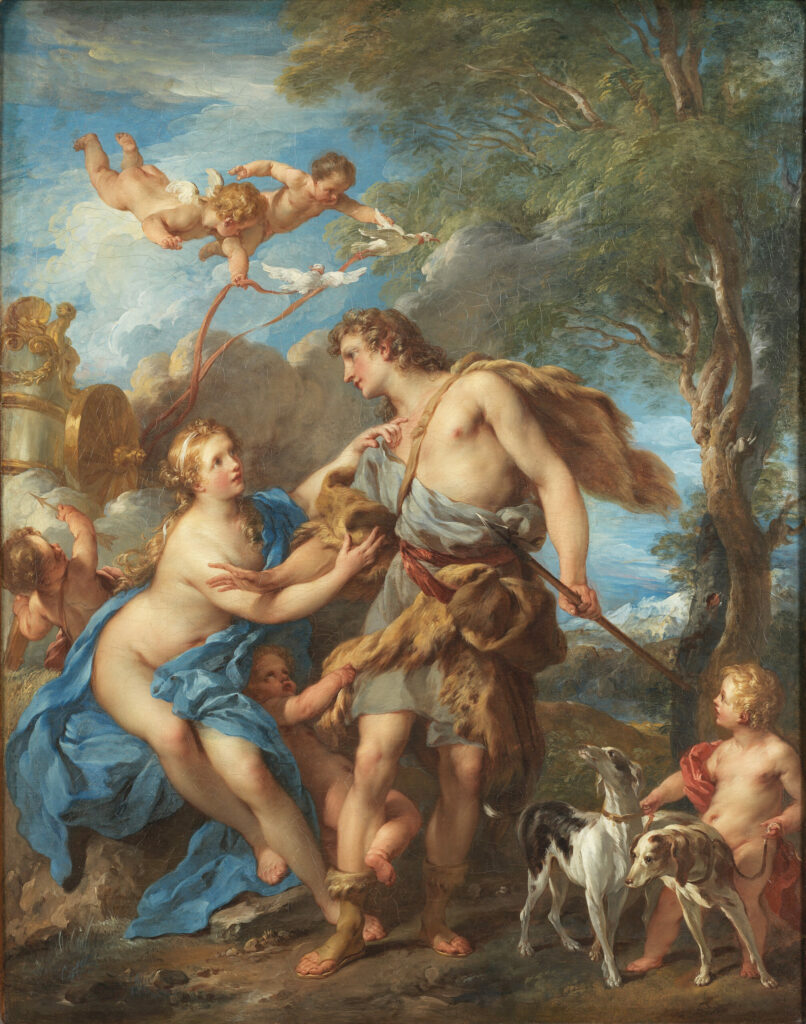
“Venus and Adonis” from 1729 brilliantly illustrates French decorative art at the height of its Rococo splendor. Lemoyne transposes here the tragic episode from Ovid’s Metamorphoses into a gallant scene of refined sensuality.
The vertical composition, deliberately chosen by the artist, magnifies the protagonists according to the canons of the “grand style”: Venus, incarnation of feminine beauty, vainly attempts to hold back Adonis, intrepid hunter adorned with his lion skin. The painter orchestrates a chromatic ballet dominated by the pearlescent blues of Venus’s drapery and the golden ochres of Adonis’s flesh. The fluttering putti and idyllic landscape enrich this allegory of love thwarted by destiny. Lemoyne’s polished technique combines virtuosity of modeling with decorative preciosity. This commission by Swedish diplomat Tessin testifies to the international influence of the French School.
Further information
- Venus and Adonis, by François Lemoyne, 1729, Photo: Cecilia Heisser/Nationalmuseum 2015, Public domain
- 94 x 74 cm
- Nationalmuseum, Stockholm, displayed in room 1603, 18th century
- https://collection.nationalmuseum.se/en/collection/item/17857/
François Lemoyne (1688-1737) embodies the apogee of grand French decorative painting under Louis XV. Student of Louis Galloche, he won the Prix de Rome in 1711 and perfected his Italian training by studying the Venetian masters and Correggio. First Painter to the King in 1736, Lemoyne revolutionized history painting by infusing it with Rococo grace without renouncing classical grandeur. His decorative masterpieces, notably the ceiling of the Hercules salon at Versailles, established a new pictorial language blending ancient mythology with contemporary refinement. Master to Boucher and Natoire, he transmitted to following generations the art of reconciling nobility of grand taste with modern sensibility, before succumbing tragically, leaving unfinished a work of exceptional richness.


